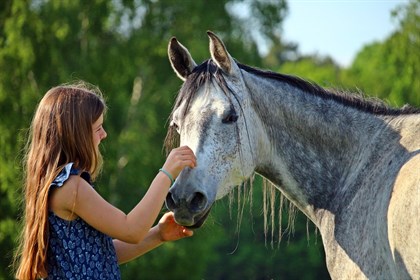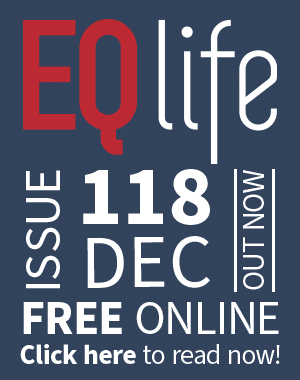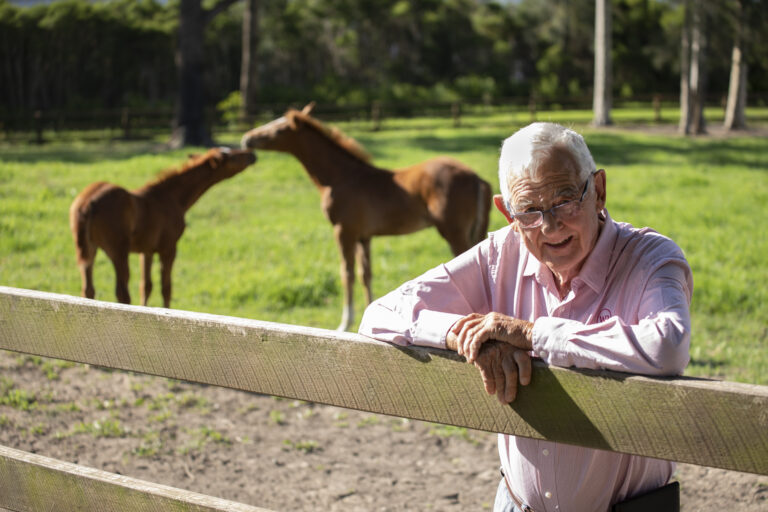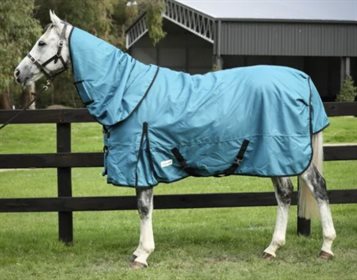The special relationship between human and horse can be traced back more than sixteen thousand years
By Tanya Taylor
The special relationship between human and horse can be traced back more than sixteen thousand years. Just like our beloved canine friends, nearly all of the equine breeds you see today have been designed and crafted by man to suit specific tasks and purposes. Domestication of the horse delivered humanity into a new age. Suddenly a great power had been harnessed which would transport people swiftly and safely across long distances and prove to be a victorious weapon in warfare. With his great strength and sharp intelligence, the horse became highly respected amongst men and played a major role in the development of our civilization. The horse’s natural elegance, beauty and grace inspired minds and became the feature of many myths and legends and to this day the horse remains synonymous with nobility. The spirit of the horse is woven deeply into our culture and who knows where man would be today without this very trusting and beautiful relationship?
Prehistoric Horse
Horses are most notable for their power and size so it may surprise you to know that they started out as tiny creatures, about the size of a small dog and instead of having one solid hoof, they had five individual fingers. These first tiny horses were known as Eohippus and it took fifty million years for them to evolve into the powerful Equus we know today. The first pictures of modern horses were found carved into the walls, deep inside of the Lascaux Caves in France. These paintings date back to 17000 BC and it’s clear that the cave-dwelling HomoSapiens were fascinated with this swift and strong wild beast. There’s no evidence to suggest that there was any domestication at this time, quite probably our early ancestors would have hunted them for meat.
Domestication
It’s hard to pinpoint exactly when the flighty, free-spirited horse was first harnessed. Most of the evidence suggests that it was the Botia Tribe of the Great Steppe Region around Mongolia who forged the first trust. The region is ripe with evidence of dung piles and skeletons which archaeologists date back to 3700 BC. It’s thought that from here, horse culture fanned out across Europe and Asia. New evidence is emerging, however, that calls this theory into doubt. In 2010 statues of horses wearing bridles were unearthed in Saudi Arabiadating back to 9000 BC. Also, recent genetic studies have revealed that the genetics of the Botia horses aren’t shared with domestic breeds of today. It’s possible that we’ll never know for certain who tamed the first horse but what we do know is that it was a magical moment that would dramatically change the lives of modern man.
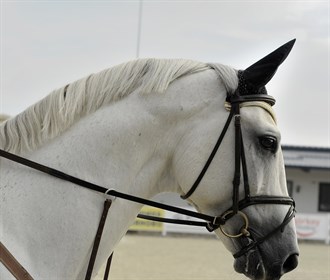
It’s hard to pinpoint exactly when the flighty, free-spirited horse was first harnessed
Horse Cultures
It’s very easy to see why the mighty horse quickly became held in the highest regard within communities. Their pacifist nature made them willing servants, high emotional intelligence meant they were quick learners and their stealth and agility couldn’t be matched by any other large animal. Many tribes evolved around the horse, creating Horse Cultures. The Huns were the most fearsome of these tribes. They could ridebefore they could walk and were completely at one with their animals. Their strength and ease on horseback played a big part in the downfall of the Roman Empire, under the leadership of Ailla in 443 AD. The Great Ghengis Khan, leader of the Mongols, between 1206 and 1270, established one of the largest empires in history and just like Attila, he achieved this through his close bond with the horse. In Mongolia today, the horse is still a prominent part of their culture and they have the largest ratio of horses to people than anywhere else in the world.
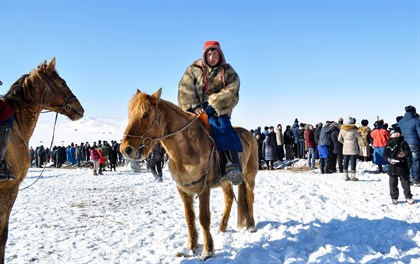
In Mongolia today, the horse is still a prominent part of their culture and they have the largest ratio of horses to people in the world
Horse Worship
The dramatic cultural transformation that came with the domestication of the horse also brought with it an increasing dependence. Our more superstitiously inclined ancestors soon began to view the horse as a divine being and provider of life. The horse’s graceful movement, wise eyes and fleeting nature captured the minds of man and inspired much reverence. The Celts were surely the biggest horse worshippers in history. They were nature loving peoples from the xxx age, who lived in harmony with all animals but placed particular piety on the horse. From their devotion, the horse goddess Epona was born. She was the goddess of fertility, horses, donkeys and mules, symbolic of a mothers love and nurture. She was such an auspicious diety that even the Romans adopted her into their courts. The horse is a very prominent symbol throughout the Celtic culture, a beautiful example of their dedication can be found in Uffington in the UK. Here a 110m white horse has been lovingly carved into the chalk hills around three thousand years ago.
Symbolism
When you think of a horse usually the first thing to spring to mind is either freedom or power. These are the two things which the horse universally represents today. Not only are these physical attributes of the horse but they’re the gifts that he willingly gave to mankind. The power that came from owning a horse brought an elevation of status, the reason nobility is so often depicted on horseback. The white horse is always associated with the lighter aspects of life such as enlightenment, victory, rebirth and salvation, think of saints or nights in shining armour. Whereas the black horse symbolises the darker things such as death, damnation, war and pestilence. In dreams, the horse represents our own free spirit, our passionate drives and desires and a necessity to connect with them.
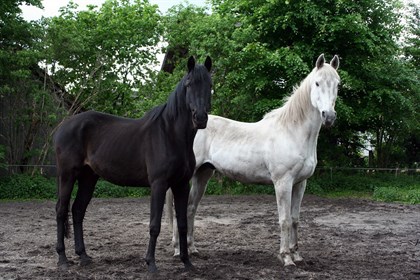
The white horse is always associated with the lighter aspects of life Whereas the black horse symbolises the darker things
Mythology
Throughout the ages, the horse has been honoured in many stories and legends. When we think of mythical creatures, usually aunicorn is the first thing that comes to mind. The stunningly beautiful but deadly white unicorn is categorized by a strong, single horn protruding from its head. This creature featured in Ancient Greek literature but surprisingly not in the mythical tales, as you would imagine, but in their non-fiction natural history texts, they believed it was a real creature! From the Greeks also came the legendary winged horse, Pegasus and the mighty Centaur. Pegasus was a noble creature, loyal and subservient, strongand magnificent, to ride Pegasus was like ascending to the heavens. He was quite the opposite Hal man half horse Centaur who was a war loving savage by most accounts but highly regarded for his strength, intelligence and power. Both creatures have been immortalized in the stars with constellations named after them, the Centaur represents the zodiac sign, Sagittarius. It wasn’t only the Greeks who had a wild imagination when it came to horses. The Vikings tell tales of the might eight-legged steed, Sleipnirand the Celts had the Enbar the white horse who travelled on water.
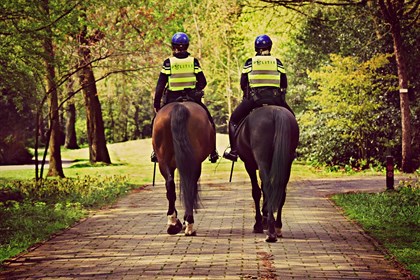
In most cities you will find police horses checking the streets and controlling crowds
Working Horse
Before the horse, it was cows and oxen who endured the workload of men but compared to the willing, versatile, horse these creatures seemed cumbersome and slow. Man beganto breed horses with specific purposes in mind. The large, heavy breeds that we see today were bred for their strength, size and laid back attitude making them perfect for heavy types of labour on the farm. With ease, they ploughed the land, turned the mills and transported harvests from the fields in huge carts. The lighter, finer breeds with their stamina and endless endurance made perfect messenger carriers. They’d deliver messages to far away lands swiftly and safely, pioneers of the first postal service. Middleweight Horses were bread with the coach in mind, transporting people easily through streets or countryside, providing the first taxi service. In London alone, it was believed that there were 300000 horses working on the streets in the 1900s. With the invention of the steam engine in 1698, a huge workload was lifted from the horses strong back though proof of their service will always remain in the measurement of horsepower. Of course, the horse hasn’t become completely redundant. In most cities, you will find romantic carriage rides on offer or see police horse controlling crowds. Over in America cowboys still herd wild mustang on horseback and let’s not forget the humble riding school ponies of the world, patiently teaching the basics of horsemanship to many willing students.

The large, heavy breeds that we see today were bred for their strength, size and laid back attitude making them perfect for heavy types of labour
Warfare
The first war horses can be found poised on wall paintings from ancient Egypt. They used horse-drawn chariots to lead them into battle and so did the ancient Greeks. Though the chariots looked very grandiose and were incredibly efficient at transporting weapons and supplies, their use in combat was pretty inefficient. It was Alexander the Great who in 315 BC revolutionised the use of horses in war. Instead of using them harnessed to unstable and imprecise chariots, he decided to mount men on their backs and send them galloping at full speed on the first charge brandishing swords and spears. This was incredibly destructive and a big success, thus the first cavalry was born. Every army since has had one, though these daysit’s mostly used only for show. In 1492 the horse was introduced to the Americas by the Spanish in their conquest. The native American Indians with their natural affinity to animals, instantly bonded with the horse and enlisted them in their plight against the Spanish invaders. In world war 2 alone it is estimated that up to eight million horses perished while assisting man in the great battle against fascism. They fought valiantly and faithfully even though every wild instinct inside them would have been telling them to flee from the roaring bombs and mortars. Many great war heroes have dedicated their success to their horse including Alexander the Great himself. We can never forget the great sacrifice that the loyal horse has mad for humanity in the name of war.
Modern Horse
It’s been centuries now since technological advancements such as the motor have diminished our dependence on the horse, yet still, it remains a respected pinnacle of our society. They’re no longer used as our sole means of transport, pullers of the plough or sacrificial weapons of war. Given a reprieve by modern technology the horse’s career has taken a more light-hearted path with their main use being now in the form of sports and recreation. Whether it be racing, showjumping, dressage or endurance riding, modern horses have become supreme athletes in many disciplines, with some racehorses valued at millions of Euros. Many people keep horses simply for pleasure, for the connection to nature, the rewarding feeling of discipline or for the contagious sense of freedom. Recently, horses have taken on the role of healers in our chaotic modern world with horse therapies becoming an ever increasing trend. Their sensitive and passive nature appeals to many people seeking solace, finding peace and comfort in the presence of our ever faithful and forgiving, gentle giant friends.
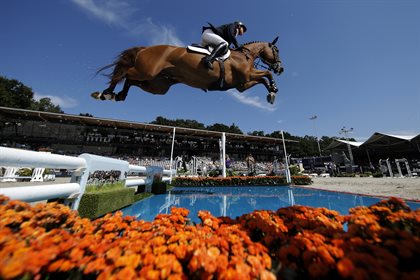
Isabell Werth Grand Prix Special Rotterdam
© Dean Mouhtaropoulos/Getty Images for FEI
READ THE LATEST NEWS ARTICLES HERE

